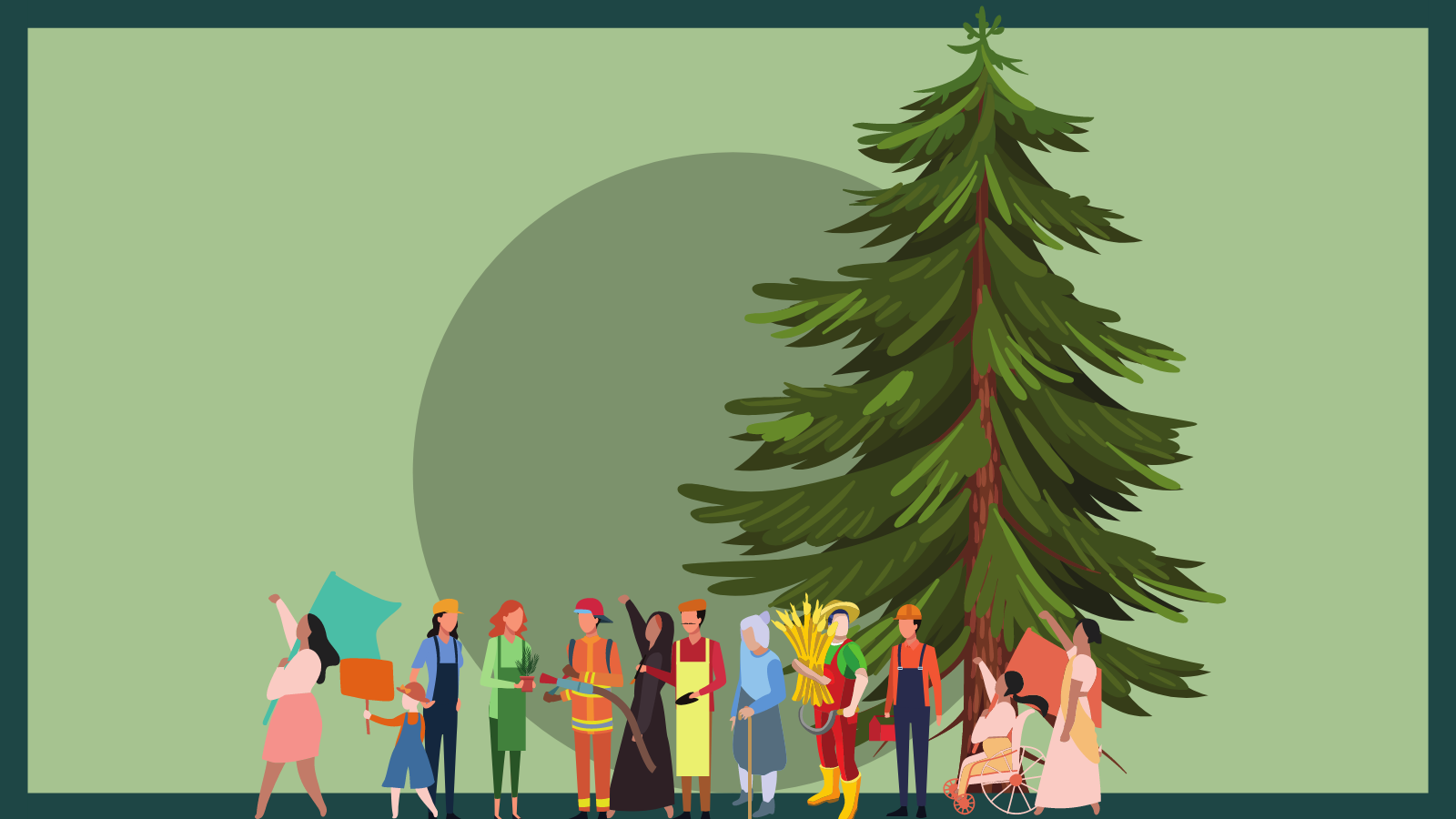
As our communities still reel from the recent deadly heat wave and stare down the barrel of another wildfire season, Pacific Northwesterners know all too well what it means to experience the climate crisis up close. From mega-fires, “atmospheric rivers,” and once-in-a-millenia droughts, our region is a harbinger of the new normal in a quickly warming world. Just last year, the climate-driven Labor Day wildfires leveled entire communities as the world looked on in horror.
Even as we grapple with the increasingly dire impacts of the climate crisis, opportunities to create a better future abound. This is why over fifty organizations from around the region released a Green New Deal for Pacific Northwest Forests in early June. Endorsed by a broad coalition of rural community groups, students, firefighters, conservation organizations and climate activists, the platform reimagines current forest practices on private, state, and federally managed public lands to respond to the cascading impacts of the climate crisis, extraction, and economic downturn on frontline communities.
“To address the climate crisis and protect frontline communities from its worst impacts, we must protect our remaining carbon-rich forests, and let new forests grow.”
People of the Pacific Northwest have always relied on the iconic forests of the region. Indigenous peoples used, and continue to use, traditional ecological knowledge like the intentional application of fire to shape and sustain the rhythms of the landbase. A significant shift brought on by the arrival of settlers and the forced removal and genocide of Indigenous peoples saw the suppression of cultural burning, and the clearcutting of the majority of the region’s ancient forests over the course of a century. This landscape-level trauma was followed by the large-scale monopolization of private forestland by logging corporations, with small landowners replaced by unaccountable and far-removed corporate investors.
Though much has changed over the past 150 years, our society’s fate is still deeply intertwined with our forests. The role these ecosystems must play in ensuring a stable climate and livable future cannot be overstated. Healthy forests filter our drinking water, maintain biodiversity, and regulate stream temperature for salmon and other aquatic species. In so doing, forests help to mitigate the future impacts of climate change. Even in the aftermath of a wildfire, our forests do critical work stabilizing soils, re-seeding the forest floor and providing habitat for species that will jumpstart forest recovery.
Our forests are also the greatest tool we have for drawing down and storing greenhouse gases. In fact, scientists tell us that the forests of the Pacific Northwest have the potential to store more carbon per acre than any other forest in the world—if we don’t log them.
“Simply defending our remaining healthy forests is not enough.”
Yet current Pacific Northwest forest management is dominated by short, intensive logging rotations to increase profit margins for Wall Street investors. Not only is the logging industry quickly liquidating one of our best natural climate solutions, in doing so it has become the largest carbon emitter in Oregon, and likely the largest in the region.
As frontline communities continue to face the worsening impacts of the climate crisis, the timber industry is fueling the fires. Those most impacted by the Labor Day fires were Oregon’s rural, BIPOC and low income communities. In southern Oregon, many of the most impacted were communities of color who lost everything in the Alameda fire—which burned through the small cities of Talent and Phoenix, leaving an estimated 40% of school aged kids houseless.
To address the climate crisis and protect frontline communities from its worst impacts, we must protect our remaining carbon-rich forests, and let new forests grow.
Simply defending our remaining healthy forests is not enough. We must also increase the stored forest-carbon of the region’s degraded industrial forests, while providing increased social and economic benefits for the forest workers and rural communities who have for too long been at the mercy of the timber industry. As logging jobs continue their precipitous decline in both number and wages—and the industry does everything in its power to avoid paying its fair share—rural economies once reliant on timber are falling through the cracks. While the industry continues to groundlessly blame the northern spotted owl for the economic woes facing workers and rural communities, in reality increasing mechanization, union busting, corporate handouts and over-logging are the true causes of the economic downturn.
The Green New Deal for Pacific Northwest Forests asserts that everyone, including those currently employed in extractive industries, has a right to a good, green union job. Those once employed in the dangerous industrial logging industry can put their expertise to use as forest-stewards, researchers, environmental educators, outdoor guides, and fire rangers—helping to reduce flammable materials around homes and communities, and work with prescribed fire to safely bring fire back to forests that need it. Forest workers once contracted to receive menial wages to endlessly cut and re-plant young trees can form worker cooperatives, with salaries and benefits to do meaningful and ecological work in the woods.
For our communities ravaged by decades of shortsighted industrial logging, we must make the courageous and necessary choices to ensure healthy forests, clean drinking water, good jobs and fire resilience for decades to come. A Green New Deal for the forests and communities of the Pacific Northwest will create the economic and ecological capacity we need to weather the climate crisis together.
A Green New Deal for Pacific Northwest Forests, Workers, and Communities
Source: Articles Viral Post

0 Comments